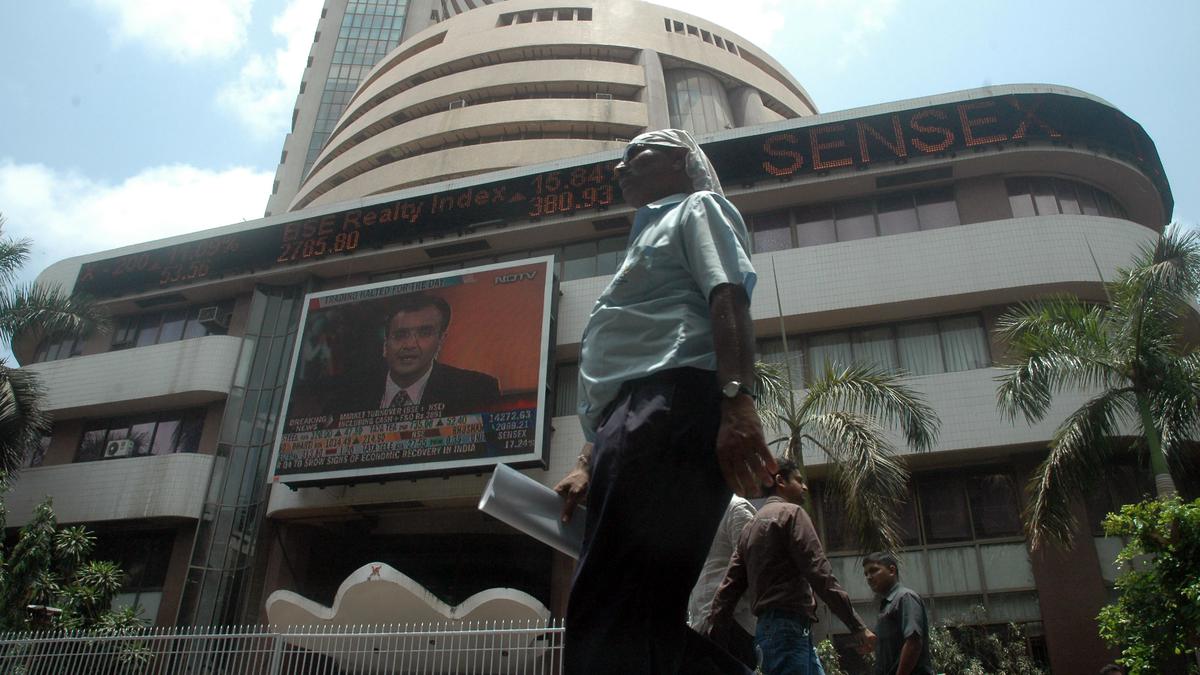
Equity benchmarks on correction path, fall for second day in a row
The Hindu
The 30-share BSE Sensex fell 299.48 points or 0.45% to settle at 66,384.7
Benchmark equity indices Sensex and Nifty ended lower on July 24, extending corrections from their all-time highs for the second session in a row due to massive selling in heavyweight stocks.
Foreign fund outflows and surging crude oil prices also weighed on equity markets even as traders were awaiting the U.S. Federal Reserve's monetary policy decision to be announced this week.
The 30-share BSE Sensex fell 299.48 points or 0.45% to settle at 66,384.78. During the day, it touched the intra-day peak of 66,808.56 and hit the lowest level of 66,808.56.
The NSE Nifty fell by 72.65 points or 0.37% to end at 19,672.35. The broader index moved between the range of 19,782.75 and 19,658.30.
Both the indices had settled more than 1% lower in the previous session on Friday, snapping their six-day record-breaking rally. The BSE benchmark tumbled 887.64 points or 1.31% to settle at 66,684.26 on Friday. NSE Nifty fell by 234.15 points or 1.17% to end at 19,745.
On Monday, 18 of the 30-stock Sensex closed the session in green while on the 50-stock index Nifty, 25 stocks ended the trading with gains.
From the Sensex pack, IndusInd Bank, Mahindra & Mahindra, PowerGrid and Bajaj Finserve gained up to 2.01 per cent.

The Union Budget unveiled on February 1, 2025, has come at a time of unprecedented global uncertainty and a flagging domestic economy. The real GDP growth is estimated at 6.4% for 2024-25 and between 6.3-6.8% for 2025-26, a far cry from >8 percent growth required annually to make India a developed nation by 2047. While much attention has been devoted to the demand stimulus through income tax cuts, not enough is said about the proposed reforms in urban development, tariff rationalisation, and regulatory simplification aimed at making Indian cities and corporates more competitive. Since the majority of economic activity is located in cities (urban areas account for ~55% of GDP) and produced by large corporates (~40% of the national output and 55% of India’s exports), the above-mentioned reforms have a pivotal role in improving India’s trend growth rate. Below we unpack each reform.












